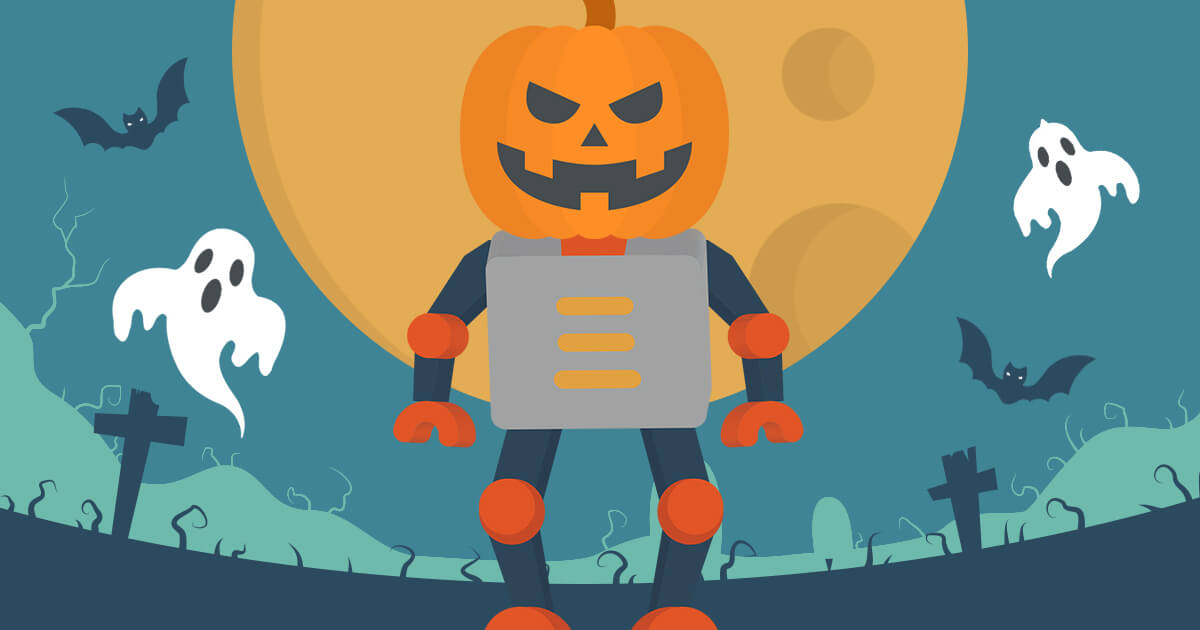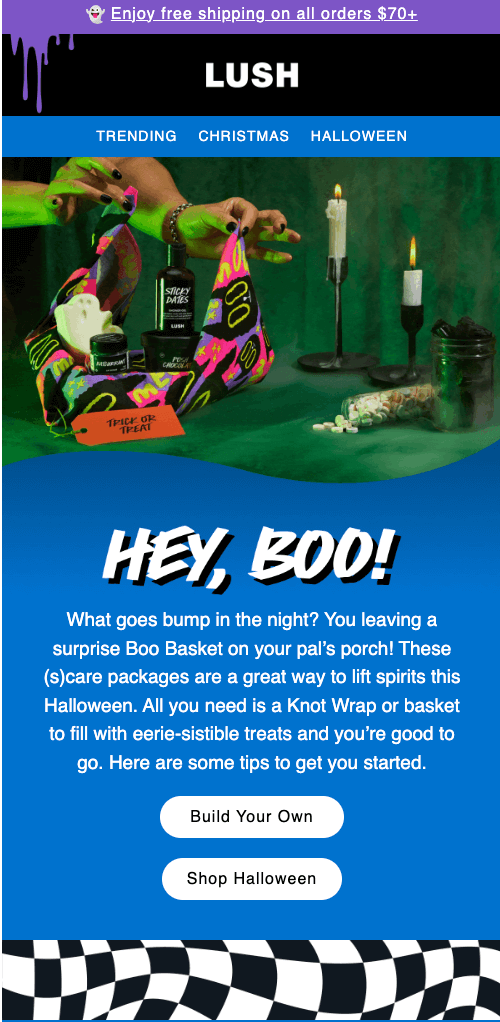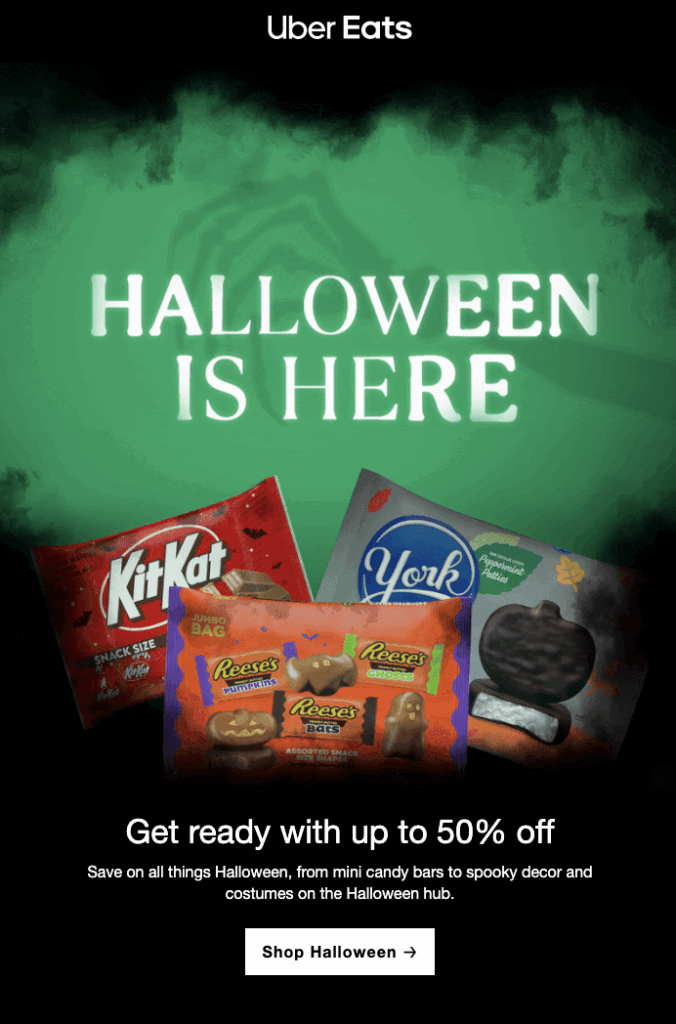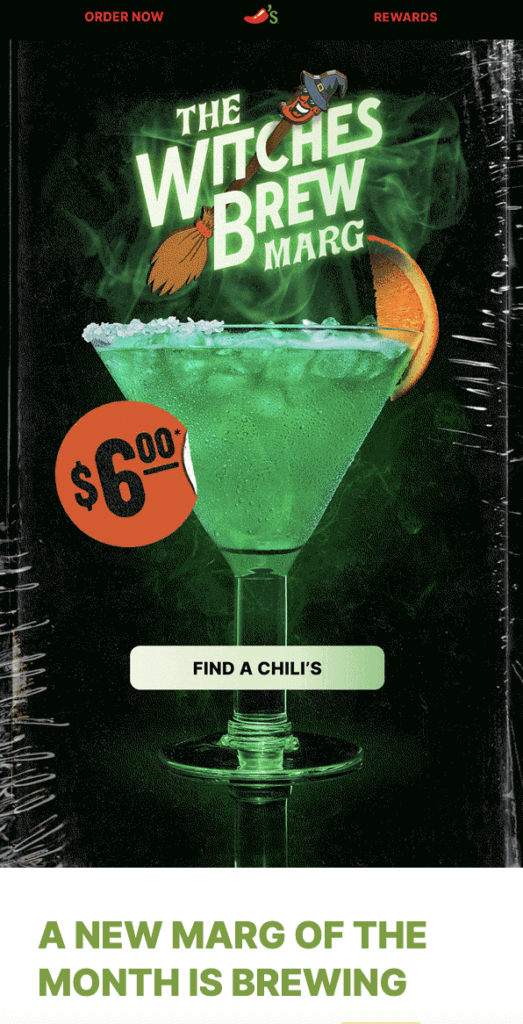
It’s officially Spooky Season—which means businesses have been gearing up for one of the most exciting marketing opportunities of the year.
As the leaves turn and pumpkins appear on doorsteps, marketers often find themselves asking:
“Should we jump on the Halloween bandwagon?”
Like all trends, it’s important to approach this one with a discerning eye and a firm grasp on your brand guidelines. After all, you want your efforts to drive a positive ROI, and things can turn nightmarish quickly if you launch creative or messaging that doesn’t make sense for your brand.
By examining the alignment between Halloween themes, your brand identity, and your target audience, you can find the perfect intersection of the three.
Ready to plan a Halloween-themed campaign? Let’s explore some ideas based on successes from other brands!
How to Set Your Halloween Marketing Campaign Up for Success
Before diving into your Halloween marketing campaigns, it’s crucial to establish clear objectives.
Determine what aspects of your business you aim to improve, whether it’s increasing brand reach, driving sales, or clearing out slow-moving inventory.
Setting SMART (Specific, Measurable, Achievable, Relevant, and Time-bound) goals is key to focusing your efforts and measuring success.
For example, instead of a vague goal like “increase sales,” opt for a specific and measurable target such as “increase Halloween sales by 10% compared to last year’s figures.” This gives you a clear benchmark to evaluate your campaign’s performance.
Next, establish key performance indicators (KPIs) to measure your campaign’s success.
These may include:
- Total revenue generated during your Halloween sale
- Conversion rates
- Coupon redemption rates
- Average order value
- Customer engagement metrics (Email open rates, click rates, etc.)
When planning your timeline, consider that many customers start their Halloween shopping early. According to the National Retail Federation’s annual survey, 47% of customers make their Halloween purchases before October even begins!
Start your campaign early to capture this eager audience and maintain momentum throughout the season.
Identify Target Audience Segments
Before you do anything, you need to understand your target audience. Analyze demographic data, lifestyle preferences, and purchasing behaviors to tailor your messaging and offerings.
Consider segmenting your audience based on factors such as:
- Families with young children: Focus on family-friendly costumes, decorations, and safe trick-or-treating options.
- Young adults: Target this group with party supplies, unique costume ideas, and themed events.
- Pet owners: Offer pet costumes and pet-safe treats for those who want to include their furry friends in the festivities.
- Halloween enthusiasts: Cater to those who go all out with elaborate decorations and themed parties.
By understanding these segments, you can create personalized marketing messages that resonate with each group’s specific interests and needs.
Create a Halloween-Themed Marketing Calendar
To keep your Halloween marketing efforts organized and consistent, develop a content calendar. This will help you plan and schedule your marketing activities across various channels, ensuring a cohesive campaign.
Your content calendar could include:
- Social media posts: Plan engaging, Halloween-themed content for each platform.
- Email marketing: Schedule a series of Halloween-themed newsletters with exclusive offers and content.
- Blog posts: Create Halloween-related articles that provide value to your audience, such as costume ideas or decoration tips.
- Promotions and sales: Plan and schedule any special offers or discounts you’ll be running during the Halloween season.
Remember to maintain consistency in your messaging, tone, and visuals across all content to reinforce your brand identity while embracing the Halloween spirit.
Spooky Email Marketing Ideas
Email marketing is a powerful tool to engage your audience during the Halloween season. Here’s how to make your Halloween marketing campaigns stand out:
Create Attention-Grabbing Subject Lines
Your email subject line is the first impression you make on your subscribers. It can determine whether your email gets opened or ignored.
To create Halloween subject lines that boost open rates, consider using puns, wordplay, and Halloween-themed language.
For example, you could use phrases like “Spooktacular deals” or “Fang-tastic offers” to capture attention.
Keep your subject lines short and sweet, aiming for no more than 40 characters to avoid being cut off by email clients.
Incorporate Halloween-themed emojis like 🎃, 👻, or 🕷 to make your emails stand out in crowded inboxes. However, use emojis sparingly to maintain a professional look.
To create urgency and encourage immediate action, use phrases like “Limited time offer!” or “Hurry before it vanishes!”
You can also personalize subject lines by including the recipient’s name or referencing past purchase behavior to make the message feel more relevant.
Implement Automation for Timely Delivery
Want to maximize the impact of your Halloween marketing campaigns? Automation will take them to the next level! Here’s how you can leverage it to save time and boost ROI:
Comprehensive Content Calendar and Audience Segmentation
- Develop a strategic email schedule spanning from early October through post-Halloween. This calendar should include initial teasers, main campaign launches, last-minute reminders, and follow-ups.
- Segment your audience based on preferences, past behaviors, and engagement levels.
- Use dynamic content blocks to personalize messaging for each segment, ensuring that horror enthusiasts, family-friendly content seekers, and bargain hunters all receive tailored content.
- Implement progressive profiling techniques to continuously refine these segments throughout the season, gathering more data with each interaction to improve future targeting.
Sophisticated Triggered Email Sequences
Set up multi-step automated workflows triggered by specific subscriber actions.
For example, you could create:
- A Halloween-themed welcome series for new subscribers who join during the season
- Abandoned cart reminders with spooky elements to recapture lost sales
- Post-purchase follow-ups featuring themed cross-sell suggestions.
Incorporate dynamic countdown timers in these emails to create urgency for limited-time offers or to build excitement as Halloween approaches.
Depending on your email platform, you may even be able to leverage AI-driven send-time optimization to determine the best time to send emails to each individual subscriber based on their unique engagement patterns. This will maximize the interaction on each email.
Integrated Multi-Channel Approach
- Synchronize your email campaigns with automated social media posts and SMS messages to create a cohesive, omnichannel experience. This integration ensures your Halloween messaging remains consistent across all platforms.
- Set up retargeting ads that reinforce your email content, keeping your brand and Halloween offers top-of-mind for subscribers as they browse the web.
- Implement behavioral triggers based on website activity, such as browsing Halloween categories or viewing specific products, to send highly relevant, timely emails that capitalize on demonstrated interest.
Examples of Scary-Successful Marketing Emails from 2024
When executed with creativity and brand alignment, Halloween marketing campaigns can yield impressive results. Let’s explore some standout examples that showcase how top brands have leveraged the spooky season to engage their audience and drive business results.
1. Lush’s Boo Basket Campaign

This Lush Halloween email campaign is a smart example of how to engage your audience with a festive offer.
The playful “Hey, Boo!” immediately grabs attention, and the concept of a surprise “Boo Basket” provides an easy way for customers to spread Halloween cheer while showcasing Lush products. By encouraging customers to build their own curated basket of products, Lush is leveraging personalization and driving product interest in a fun, seasonal way.
2. Uber Eats’ Halloween Candy Promotions

Uber Eats is capitalizing on the candy craze this year! The messaging in this email is clear and direct, emphasizing convenience and affordability.
For marketers, this shows the power of using familiar products and significant discounts to drive urgency and sales. The call-to-action, “Shop Halloween,” funnels users to browse a curated selection, making it easy for them to purchase all their Halloween needs in one place.
This is an example of a product-driven campaign that’s designed to maximize holiday sales.
3. The Chili’s Witches Brew Campaign

This Halloween campaign from Chili’s, featuring their Witches Brew Marg, is a prime example of how to creatively promote a seasonal product that draws customers in.
The eerie, eye-catching visuals make this margarita hard to resist. At just $6, it offers an enticing price point that encourages customers to visit their local Chili’s to experience it firsthand.
The clever tie-in with Halloween, combined with an affordable deal, positions Chili’s as a go-to spot for those looking to celebrate the season with a fun, themed experience. It’s a perfect example of how to use product marketing to create buzz and boost foot traffic.
Make Every Season a Winner with MAC!
With 15+ years of industry experience and more than 1,250 clients served, MAC offers unparalleled expertise in marketing automation and CRM platforms.
Our certified MA/CRM consultants can help you with everything from strategy to execution, including database audits, campaign design, platform implementation, and strategic support for sales and marketing operations.
And the best part? We keep your ROI in mind at every step, so you can trust us to provide tailored solutions that drive tangible results for your organization.
Ready to optimize your marketing efforts across all seasons? Contact our experts for a consultation.


